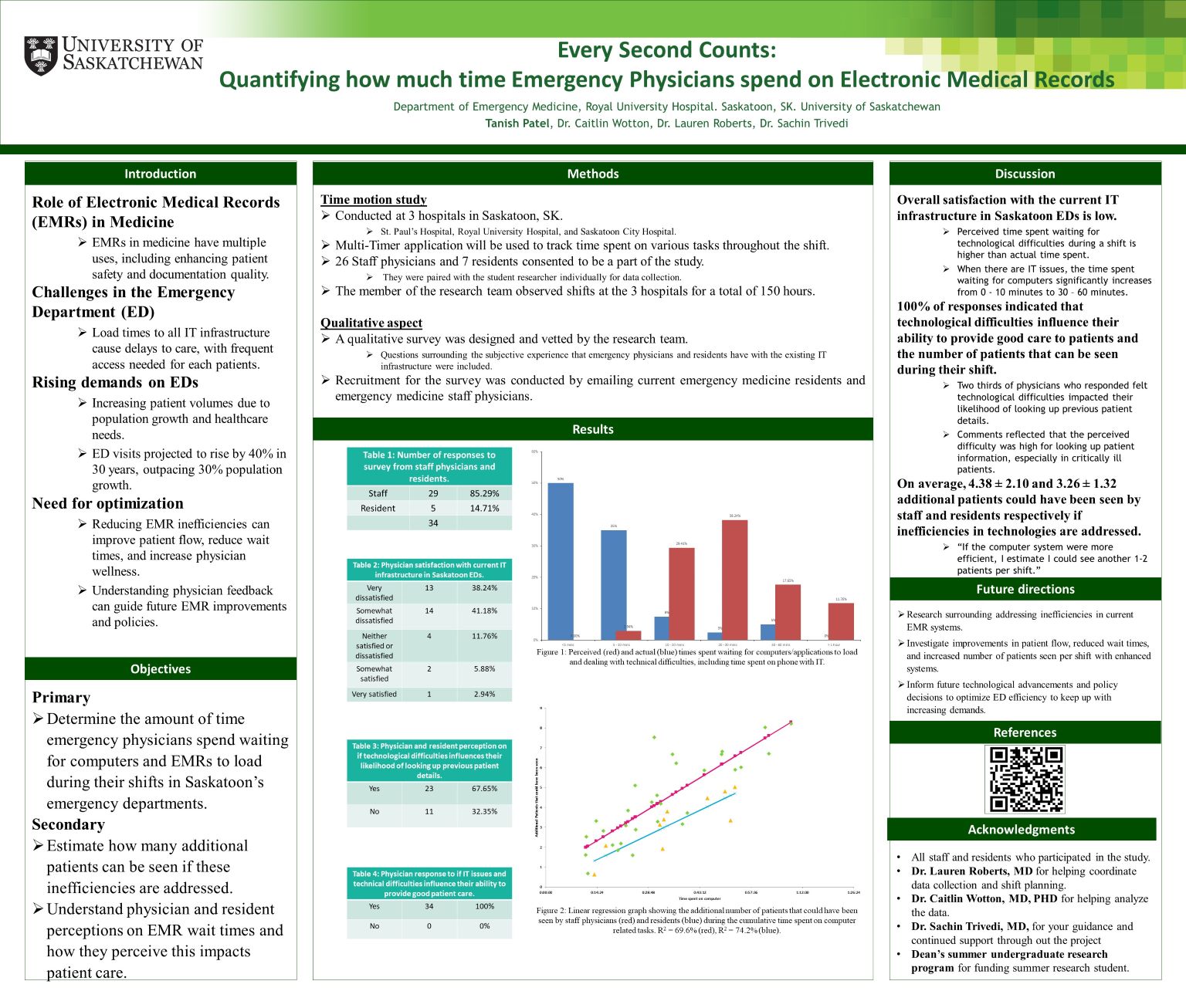
Every Second Counts: Quantifying how much time Emergency Physicians spend on electronic medical records
Tanish Patel
Introduction: The introduction of Electronic Medical Records (EMRs) revolutionized patient care. However, their efficiency is often questioned in high-volume environments like the emergency department (ED) due to the substantial time physicians must wait for systems to load. This impacts patient flow and increase wait times in the ED. With ED visits projected to increase by 40% in the next 30 years, optimizing EMR use is essential to keep up with demands.
Methods: A time-motion study was conducted in 3 Saskatoon EDs, observing 26 staff physicians and 7 residents over 150 hours. Physician and resident perceptions of the current IT infrastructure was assessed through a survey.
Results: Overall satisfaction with IT infrastructure was low. While perceived waiting times were higher than actual, delays increased significantly during IT issues. All respondents noted that technological difficulties negatively affected their ability to provide care and see more patients. Staff and residents could see 4.38 ± 2.10 and 3.26 ± 1.32 additional patients per shift, respectively, if these inefficiencies were resolved.
Discussion: Improving EMR systems could reduce wait times, enhance patient care, and increase patient flow. Addressing these inefficiencies would optimize ED workflow and support better emergency care delivery in high-demand settings.
